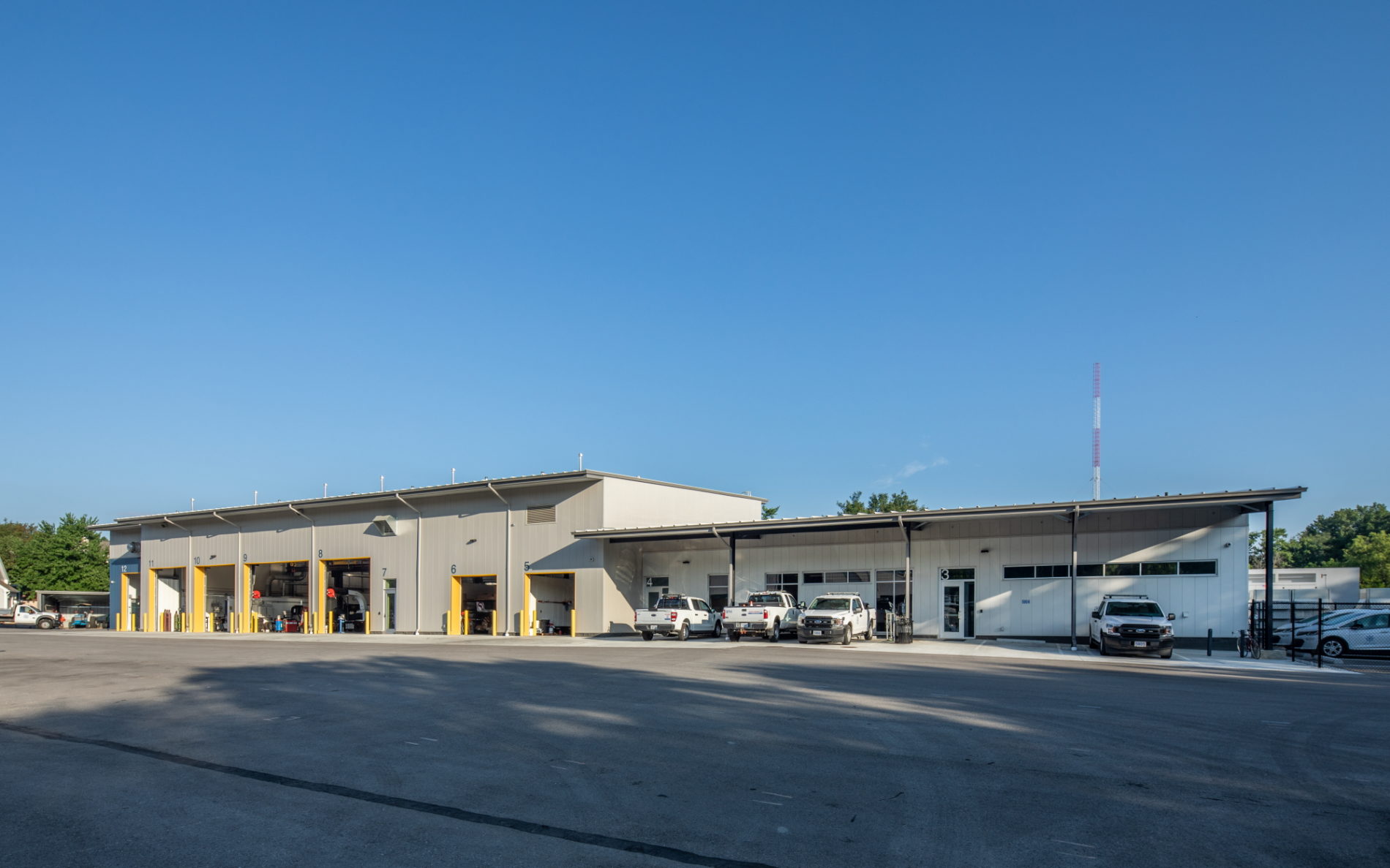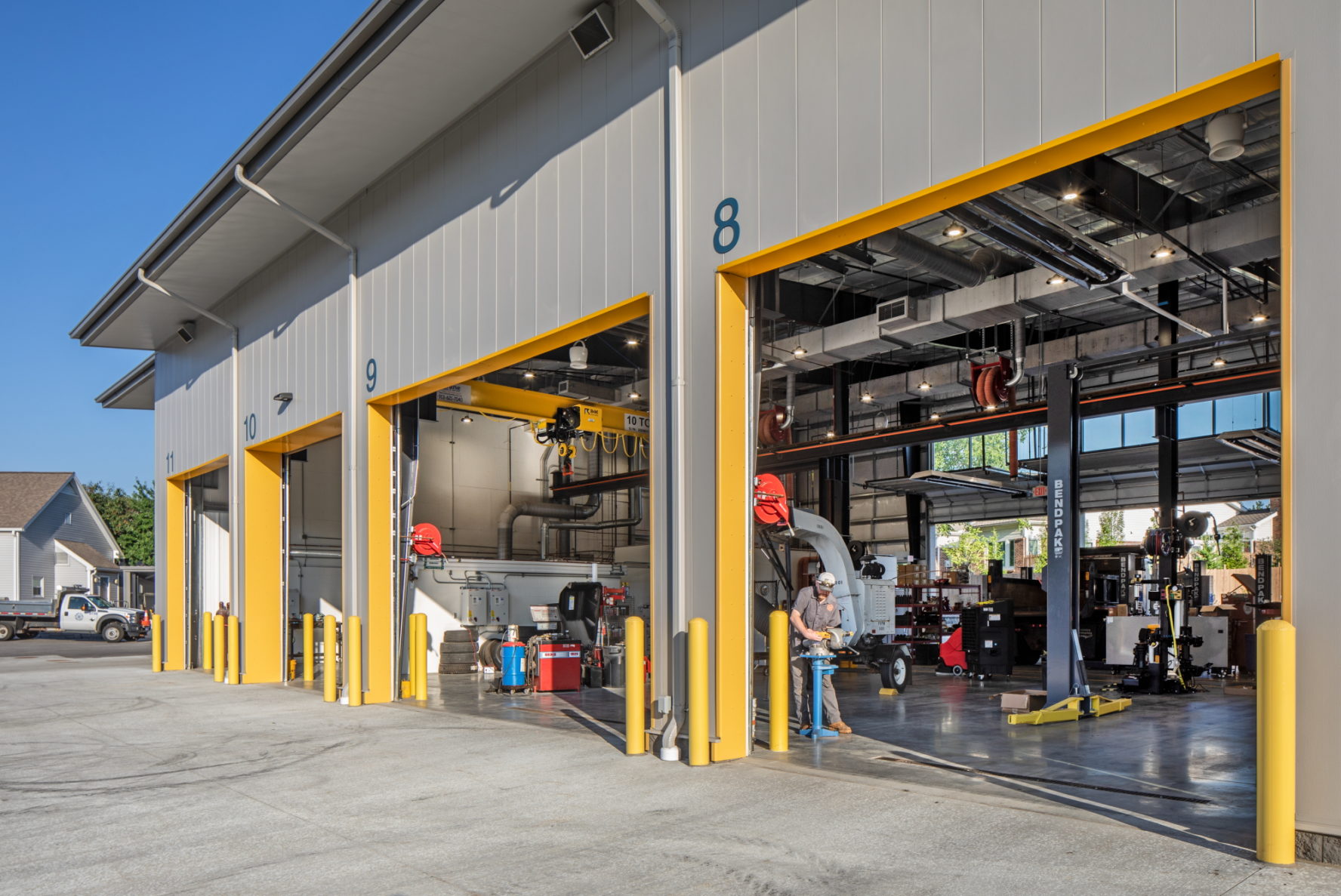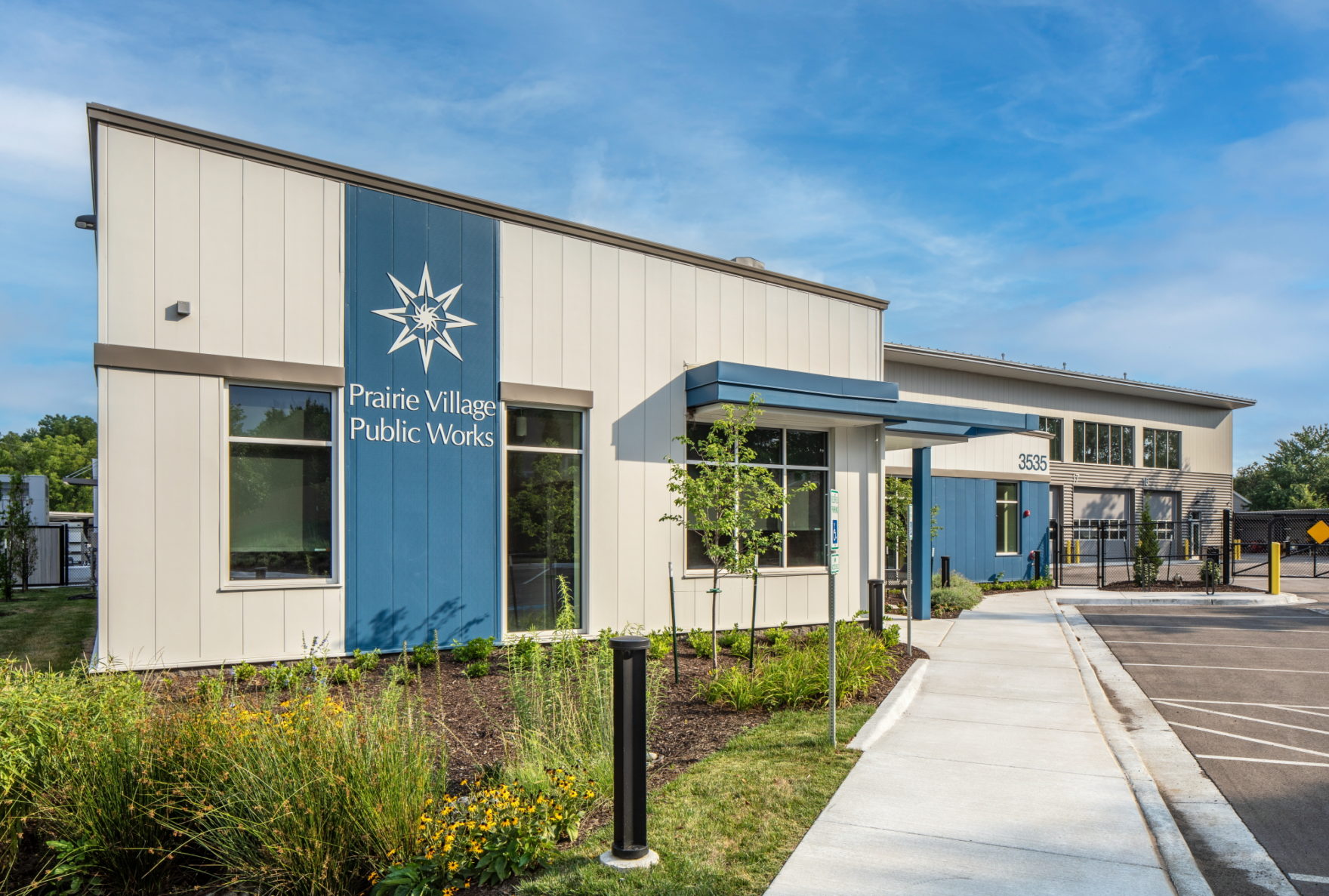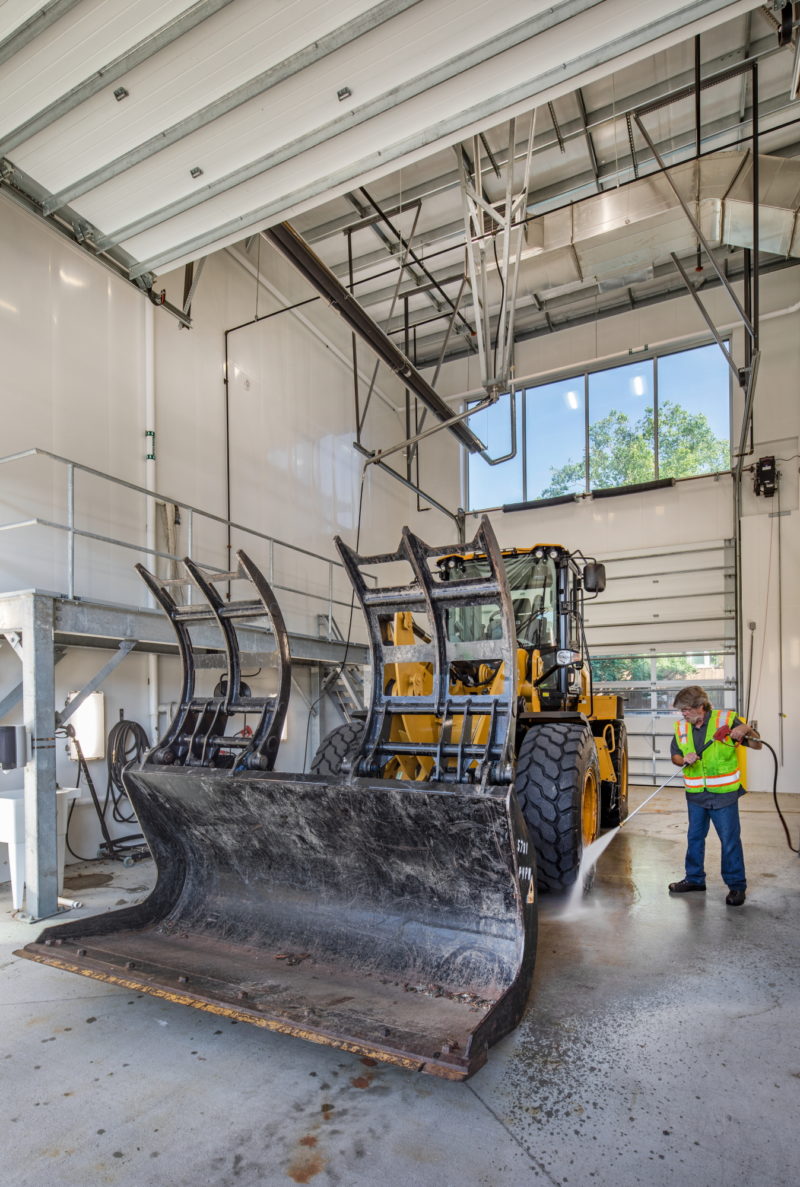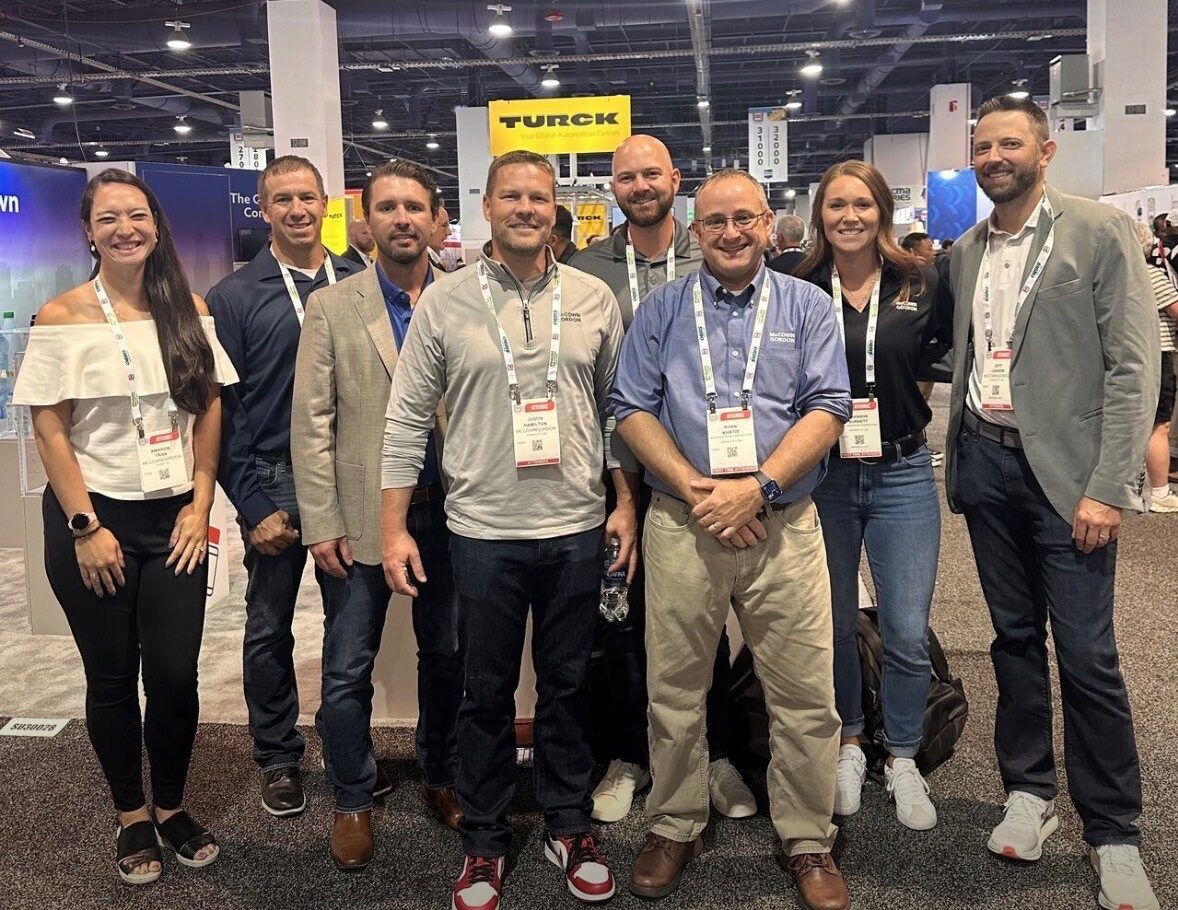Prairie Village Public Works Facility awarded LEED Platinum

The new Prairie Village Public Works Facility was recently awarded the highest level of performance from the U.S. Green Building Council (USGBC)—Platinum Certification in the Leadership in Energy and Environmental Design (LEED) Rating System. LEED Platinum is the highest possible rating for measuring a building’s environmental impact. To achieve LEED Platinum, a project must earn 80 points or more by adhering to prerequisites and credits that address carbon, energy, water, waste, transportation, materials, health and indoor environmental quality. The team actively pursued 83 points on the new LEED Version 4 Rating System and was awarded all 83 points.
The City of Prairie Village hired McCownGordon to build the facility, marking the first time the city utilized the construction management at-risk (CMR) delivery method. The state-of-the-art facility features a fleet maintenance building, offices, training rooms, and additional support spaces for cranes, vehicle lifts and wash bays. One of many benefits of the CMR delivery method was the extra level of transparency throughout the building process. The community expects their taxpayer dollars to be used wisely and for costs to be controlled. McCownGordon’s open book policy shows where every dollar of the project is spent. By using a collaborative delivery method, our team was engaged early, provided real-time estimating updates, and discussed options with stakeholders to improve the project and save money.
Determined to achieve a platinum certification, the City of Prairie Village challenged the design and construction team to find a path to achieve this certification while staying within budget. Pursuing a platinum certification requires commitment from the owner and consistent coordination between the design and construction team. McCownGordon and ClarkEnersen worked together to develop creative solutions and options for all certification levels. Leveraging our advanced technology tools, our team was able to provide real-time cost and potential schedule impacts of various design decisions, allowing the owner to make informed decisions. While some of the design decisions carry a cost premium in comparison to code minimum design and construction, the facility should be poised to save 78% energy and 76% indoor water use compared to a similar code-minimum facility over its life.
Some of the sustainable strategies incorporated on the Prairie Village Public Works project include:
Water Use Reduction
- An indoor water-use reduction of 76% below baseline utilizing low-flow fixtures, waterless urinals and ENERGY STAR®-rated appliances.
- A RainHarvest tank, which supplements water for utilities like toilets, was installed underground and collects rainwater from drains on the roof.
- A stormwater detention system was installed, which will capture stormwater during a storm event and slowly allow it to seep into the ground, preventing flash flooding or overstressing of the area sewer infrastructure.
- Planting native landscape species that require no irrigation to help further reduce outdoor water use.
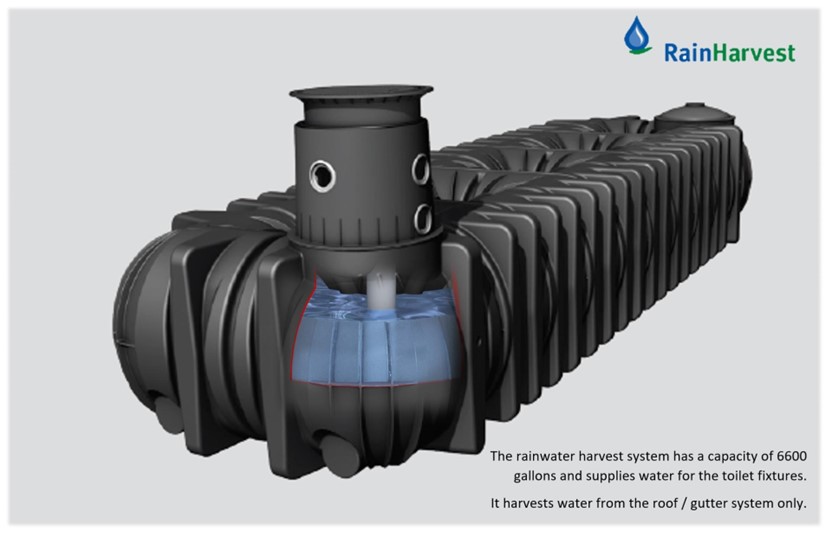
Energy Use Reduction
- Partnering with a local solar power company and creating up to 50% of the buildings annual energy usage by installing photovoltaic panels on the roof.
- Implementing demand-response technologies and participating in a local program to help increase grid reliability and reduce greenhouse gas emissions.
- Outfitting the building with energy efficient LED lighting.
- Incorporating an energy efficient VRF (variable refrigerant flow) mechanical system to heat and cool the space.

Waste Diversion
- McCownGordon diverted 86% of construction waste from the landfill with multiple dumpsters on site that collected different materials for recycling, composting and more.
Indoor Air Quality
-
- Specifying low-emitting materials including paints, adhesives and flooring.
- Specifying products with Environmental Product Declarations (EPDs). EPDs act as a “nutrition label” for building materials, allowing designers to compare and ultimately choose products with reduced environmental impacts. These materials include recycled woods that were taken from forests with replanting programs.
-
-
- Structural materials
- Insulation
- Roofing
-
-
- Indoor air quality testing before final building turnover to occupants.
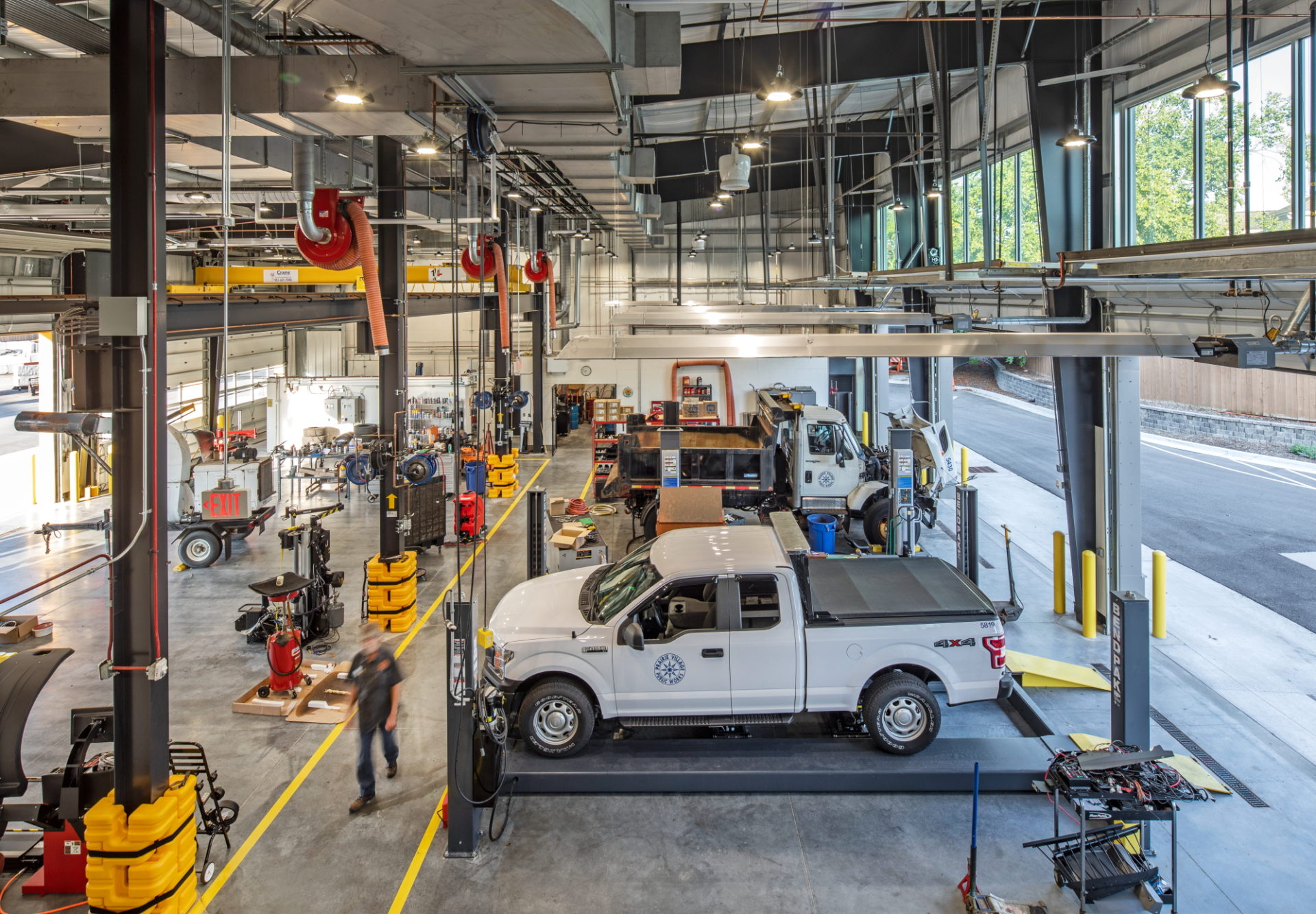
A key proof point of the success of the LEED rating system in practice came as the building was entering its final pre-occupancy checks. Before turning over the facility, McCownGordon completed an indoor air quality management test. All spaces in the facility passed except the offices located adjacent to the vehicle maintenance bay. To increase the air quality levels in these offices, McCownGordon collaborated with the design team and trade partners to re-route duct work to this space, increasing the percentage of fresh outdoor air supply. Testing the air quality led to low-cost, simple changes which will enhance occupant health.
LEED Certification is universally recognized and acknowledged as a considerable accomplishment in creating healthier places for people. Buildings that obtain LEED certification from the USGBC are addressing climate change by meeting responsibly sourced goals and impacting the sustainability of their community. These buildings save money, improve efficiency and lower carbon emissions to create a healthier world.


